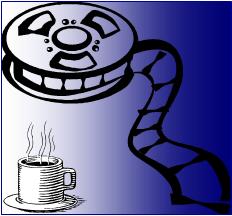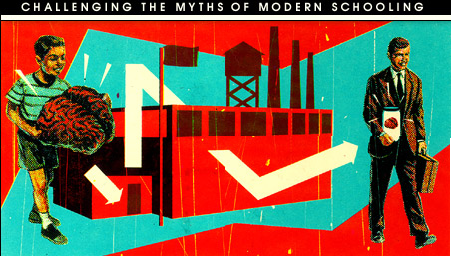

|
 |
Last Picture Show
|
Please go to the new Coffee Coaster site implemented more gracefully in Wordpress. This page: http://brianrwright.com/CoffeeCoasterBlog/?p=2894 |
Timothy Bottoms ... Sonny Crawford
Jeff Bridges ... Duane Jackson
Cybill Shepherd ... Jacy Farrow
Ben Johnson ... Sam the Lion
Cloris Leachman ... Ruth Popper
Ellen Burstyn ... Lois Farrow
Eileen Brennan ... Genevieve
Clu Gulager ... Abilene
Sam Bottoms ... Billy
Randy Quaid ... Lester Marlow
Jacy Farrow: Why can't I go to college here in Wichita Falls?
Lois Farrow: Because everything is flat and empty here...
nothing to do.
When this movie came out in 1971—well before the advent of Siskel and Ebert—it was highly celebrated in the artistic community, and it seemed all the commentary feted the young director Bogdanovich as the next great genius in moviedom. I remember watching this one at a semi-art theaters in Birmingham, Michigan. And being a 22-year-old firebrand Randian libertarian at the time, I blithely pigeonholed the movie as "naturalistic," which was close to "behaviorism" in Rand's basement of epithets.[1]
I must say—and just the other day has been my first true mature viewing of the film, having now some experience in the reviewing profession—very few aspects of the movie do not completely blow me away as esthetic qualities of the highest order. Let me list them:
The reason I indicate in the subtitle that "Bogdanovich scores with McMurtry gold" is that I generally find the creative prime-mover material behind a film to be its literary inception. As a writer, I tend to elevate the act of wording-out one's imagination at a point higher in the creative process than any other activity... though I've modified that prejudice to some degree lately. [For example, I find the movie Dances with Wolves—its directing and producing—to vibrate on a higher plane of imagination than the authoring, probably because of the nature of the subject.]
What Larry McMurtry does in virtually every one of his marvelous works is present believable and sympathetic characters... not to mention a host of less sympathetic ones to play off. Typically, when you dig into a McMurtry novel, the world you are actually in ceases to have importance, and the people springing from the pages become such a part of your own psyche that you resist finishing the book for the sense of losing them. It's as if they're going to die, like a friend or a loved one or even a pet that means everything to you. Naturally, you move on to the next novel.
But in the next book, though most of his life situations are set in Texas, a whole new universe of loved ones crops up... to thrill at getting to know, then sadly relinquish. Just like life. Indeed, to classify McMurtry's universes as "slice of life" is to beg the question of what kind of life. His slices are from pies made by Jenna (Keri Russell) in the movie Waitress. Recall her children's song:
Baby don't you cry, gonna make a pie,
gonna make a pie with a heart in the middle.
Baby don't be blue, gonna make for you,
gonna make a pie with a heart in the middle.
Gonna make a pie from heaven above,
gonna be filled with strawberry love.
Baby don't you cry, gonna make a pie,
and hold you forever in the middle of my heart.
So these pies, these characters are made, filled with McMurtry's "strawberry love." He fashions them and sets them loose to act as they will because of who they are. [Another Randian icon compromised: plot. What is the plot of Last Picture Show? I guess you could call it organic, call it the progress of life (and death) in a small town in West Texas, in 1951, for a handful of key and extremely real characters.] Even though most of the action centers around Sonny (Timothy Bottoms), what happens to most of the roster above is on equal moral billing.
Sure enough, just as the setting, most of the lives look out at the behavior horizon and one word forms in their mind: bleak. At least conventionally so. There aren't any Randian heroes in this lot, not even anyone like a Homer Hickham in October Sky, who looked up and saw space flight in his future. [Now I can see why I tended to disdain the Picture Show story in my early 20s: because doggone it, my life was going to mean something! Not fizzle out in a pointless exercise of human frailties on a desolate, soulless flatland.]
But here's the deal. We all have the soul. Not only am I living my dream today—though not at all as I literally anticipated—but each of these characters does, too. It's a different environment, possibly a different scale, but the movement of the sympathetic ones—Sonny, Duane (Jeff Bridges), Jacy (Cybill Shepherd), Sam the Lion (Ben Johnson), Ruth (Cloris Leachman), Lois (Ellen Burstyn), and Genevieve (Eileen Brennan)—toward giving their unique middle finger to Universal Bleakness is palpable. Each of them has a soul that cherishes a special moment and/or a special person like a flower blooming in the desert.[2] Such moments are what define, and what humanize, these romantic heroes.
Sam the Lion: If she was here I'd probably be just as crazy now as I was then in about 5 minutes. Ain't that ridiculous?... Naw, it ain't really. 'Cause being crazy about a woman like her is always the right thing to do...
People refer to Last Picture Show as placing about eight of the principals squarely on the road to stardom. It was a virtual Actors' Paradise, and they measure up. When you watch the DVD special feature of Bogdanovich describing making of the movie, you realize he was obsessed with getting the most sublime effort from each of them. You never think of Jeff Bridges as a great actor, but watch this movie. Four actors were nominated for supporting-actor Oscars: Bridges, Burstyn, Leachman, and Johnson. The latter two won.
Again from watching the special features, you determine that the city they used for Anarene, Texas, was in fact Archer City (near Wichita Falls)... and Larry McMurtry's true home town. The decision to film in black and white was absolutely brilliant: everything becomes starker, not just the landscape but the emptiness bearing down on so many of the people's lives. [And the valiance of their resistance.] With the cinematography I get the same feeling as the neighbor guy in American Beauty, who becomes enthralled watching leaves circulating against a wall in the wind. It's a Zen experience... and quite the metaphor.
We mustn't neglect to mention the music. The score, filled largely with songs from the immortal Hank Williams, underscores the all-Americanism of the film. This is most certainly the way we were—Texan or not—and it's all about living, or at least savoring, the dream, regardless of how ephemeral.
Like Friday Night Lights, I never want to let go of these friends of mine.
###
[1] Rand and Objectivism generally extol romantic realism as the only legitimate genre in art. Still, as someone who's read a lot of Larry McMurtry's novels over the years—he wrote Lonesome Dove—it's become clear to me that his work falls in the category of realism with at least a tinge of romanticism. Thus, "de-dogmatized" Randians generally find more art acceptable (and enjoyable) than we used to... regardless of genre.
[2] Reminiscent of Gus McCrae (Robert Duvall) in Lonesome Dove, who held fast to his love for his Clara as exemplified by that one moment of youth they shared on the bank of the San Antonio River where they held hands and kissed and pledged their love.


Click banner to
order, click here
for book review

Click banner to
order, click here
for book review
 |
 |
|||
| |